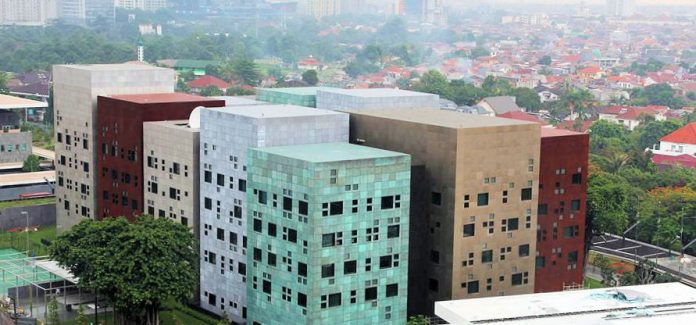Australia’s Department of Foreign Affairs and Trade is seeking security management services for the Australian Embassy and consulates in Indonesia.
The Commonwealth of Australia, represented by the Department of Foreign Affairs and Trade, is seeking to engage a service provider with the demonstrated capability and experience to provide security management services to support the work of the Australian Embassy and consulates in Indonesia.
Occupying a 40,500 square metre site with a floor area of 50,106 square metres, Australia’s largest and most secure embassy provides office facilities for 551 employees – Australian and Indonesian – representing 12 government agencies and was built at a cost of $A415 million and opened in 2016. The embassy has comprehensive security and automation solution giving plenty of scope for flexible security management procedures.
The old Australian embassy in Jakarta was badly damaged in a suicide bombing on September 9, 2004, that is generally considered the responsibility of Al Qaeda-affiliated Islamic extremist group, Jemaah Islamiyah. A 1000kg car bomb was detonated at the embassy gates killing 9 people, including the suicide bomber, and wounding more than 150.
Electrical services, including electronic security systems, comply with BCA and appropriate Australian Standards. At a core comms level there’s an integrated telephone and data communications backbone and horizontal cabling system. There’s a power supply infrastructure connected to the existing city system, including dual new substation(s) with independent connections to the city grid. The main electrical switchboards complete with surge protection are strategically located on the site. Lightning protection covers all buildings on the site as appropriate. Metering facilities are designed so that local authorities are not required to enter restricted areas.
Standby power generation based on diesel generator sets is integrated with the electrical supply to provide power in the event of mains failure. The underground fuel storage capacity servicing the generators is sized for a 7-day consumption at 100 per cent load for 24 hours per day continuous operation. UPS is provided to essential lighting and power as appropriate. All essential service systems such as lift, fire hydrant hose reel pump, and sprinkler pump are connected to back-up power supplies.
There’s a combined emergency warning and intercommunication system (EWIS) public address system allowing audio communication to all areas of the embassy buildings. Emergency lighting is independent of the general lighting fixtures and shall incorporate integral battery and charger. Exit lighting is independent battery backup type and based on LED technology. External lighting is provided for security and access purposes including maintenance of CCTV coverage.
Security measures for embassy follow the principles of defence in depth which utilize layers of passive and active security measures to cocoon the more secure areas. Compound grounds are secured by monitored perimeter walls with controlled guardhouse access points on the street frontages, with landscaping restricted to allow clear lines of sight.
Public and official building access is segregated. Automated perimeter lighting is provided that may include both twilight and movement detection activation. Appropriate materials, fixtures, hardware and fittings are used for the building shells. Electronic security elements include access control to allocated doors, intruder detection, CCTV cameras cover all portions of the embassy grounds with these and other systems monitored and managed from a manned security control room.
The fire system design responds to the requirements of the BCA and with the specialist requirements for a chancery building. The fire safety system adopted for the building incorporates fire detection and alarm systems, sprinkler protection, hydrants and hose reels, and illumination of building egress in accordance with any fire engineered approach.
Fire detection is achieved by the installation of smoke alarms and heat detectors connected to a main fire indicator panel, with battery back-up, and a mimic panel at the guard post incorporating automatic communication with the embassy duty officer. An audible alarm communication system to alert occupants is installed throughout the buildings. Fire suppression is handled by an automatic sprinkler system, the careful selection of retardant materials and strategic location of extinguishers, hydrants and hose reels. Safe egress from the building is ensured by compliance with BCA.
This tender was only just releasesd and it closes on April 20 so move fast – you can find out more here.
#securityelectronicsandnetworks.com











